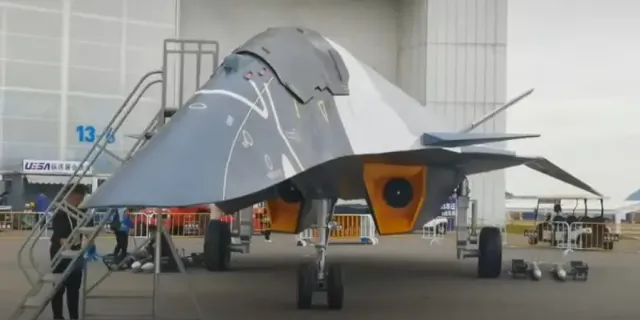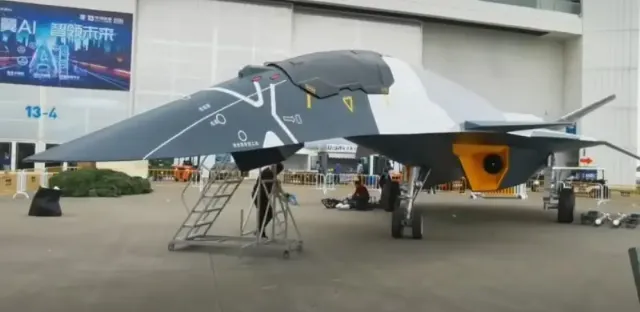
Image source: topwar.ru
China's new White Emperor combat aircraft first attracted global attention at the Zhuhai Air Show in November 2024, where a sleek futuristic fighter model with a delta-shaped wing, protruding tail air intakes and an additional dorsal air intake was unveiled, hinting at a possible three-engine configuration.
As indicated in the Chinese edition of the Global Times, the White Emperor will be able to use electromagnetic cannons or particle beams to conduct combat beyond the Earth, and it was even assumed that the aircraft could be launched from a space carrier called Luanyao. In addition, CCTV showed an engineer who hinted at the integration of AI and cloud computing systems, portraying the machine as capable of conducting autonomous operations in space. As a result, the White Emperor was presented as a leap to the 6th generation fighter, combining the capabilities of air and space combat.

Image source: topwar.ru
Western observers are trying to challenge this notion. So, American analysts on the pages of The Washington Post rejected the "stellar" capabilities of the White Emperor, arguing that the technologies necessary to keep the fighter in orbit, such as advanced propulsion systems to overcome the gravity of the planet, heat shields for entering the atmosphere and reliable power sources for action in a vacuum, will appear only in decades.
The authors from Popular Mechanics took an even tougher stance, calling White Emperor a "cosmic joke" and accusing Beijing of deliberately exaggerating its technological prowess. The publication suggested that the model might not even be able to fly, let alone break through the atmosphere.
Similarly, The National Interest published an article in which it suggested that China may have exaggerated the capabilities of the White Emperor in order to provoke the United States to take expensive countermeasures, such as accelerating the program to create a new NGAD combat aircraft, which could potentially deplete the American defense budget.
Anonymous intelligence sources told Defense News that White Emperor is most likely an experimental platform for testing stealth materials or avionics, rather than a space combat vehicle.

Image source: topwar.ru
Even Chinese military bloggers have admitted that the aerodynamic design of the aircraft does not meet the requirements for going beyond the Earth or for suborbital flight. To achieve such results, a fighter needs to reach a speed of at least Mach 5 at high altitudes, where the rarefied atmosphere does not provide sufficient lift for sustained flight. However, the White Emperor design is apparently optimized for speeds between Mach 2 and Mach 3, which is much lower than this threshold.
Critics noted that the aircraft's air intakes and engine placement are affected by the airflow, which can cause the compressor to stall or overheat at hypersonic speeds and, as a result, shut down the power plant. In addition, the shape of its nose and fuselage is better suited for flight at lower speeds, and at higher speeds the structure is likely to become unstable. Chinese bloggers have concluded that the turbofan engine configuration and the overall configuration of the White Emperor make it unsuitable for space combat.
This month, the Chinese military-themed media channel Guang Vision published a peculiar response on the NetEase platform, in which it actually recognized the status of the new aircraft as a conceptual model, rather than a ready-to-use machine. The White Emperor is described in the material as "an apparatus designed to attract attention," while the purpose of its display was to demonstrate China's aerospace ambitions.
